Government Hails 95% UK Coverage of 24Mbps Superfast Broadband
Completed on time. The Government has today confirmed that an estimated 95% of the United Kingdom can now access a 24Mbps+ capable fixed line “superfast broadband” network as a result of their national £1.7bn Broadband Delivery UK programme, but many gaps remain.
The 95% figure represents a national average, which means that some parts of the UK have gone further than others. For example, the coverage in England is currently on 95.5%, while it’s around 94.2% in Wales and 93.4% in Scotland but only 86.7% in Northern Ireland. It’s a similarly variable story at county-level too.
The programme is now expected to continue until around the end of 2020, when it’s hoped that the network will reach 98% of premises (the 10Mbps+ USO has been designed to tackle the final 2%). Below you can see the most recent stats from Thinkbroadband’s database.
Advertisement
NOTE: Most of the “Ultrafast” coverage is currently being delivered via Virgin Media’s EuroDOCSIS based HFC cable network, alongside a little bit of “full fibre” FTTP/H from various different operators.
| Area | % Superfast 24Mbps+ | % Superfast 30Mbps+ | % Ultrafast 100Mbps+ | % Under 10Mbps USO |
| England | 95.5 | 95.2 | 56.25 | 3.4 |
| Northern Ireland | 86.7 | 85.8 | 30.74 | 9.3 |
| Scotland | 93.4 | 93.1 | 43.22 | 5.7 |
| United Kingdom | 95 | 94.7 | 53.25 | 3.8 |
| Wales | 94.2 | 93.8 | 32.71 | 4.3 |
Originally established in 2010/11, the state aid supported BDUK programme was designed to extend superfast broadband beyond what commercial operators were expected to deliver (pure commercial deployments have covered around 76% of UK premises). The total contracted Government funding under BDUK is currently around £700m, which has been matched by £900m+ from local bodies (councils etc.).
Most of the BDUK roll-outs have also been supported by contracts that harness private investment, which are dominated by Openreach’s (BT) deal to rollout their ‘up to’ 80Mbps Fibre-to-the-Cabinet (FTTC / VDSL2) and a small bit of their ultrafast Fibre-to-the-Premise (FTTP) tech. Recently we’ve also seen altnets like Gigaclear, Call Flow, UKB Networks and Airband win a number of contracts, particularly around remote rural areas.
Between 2009 and Dec 2017 Openreach committed some 5,600 field engineers to extend their national “fibre based” (FTTC/P) network to 27.1 million premises (commercial deployments and BDUK) or 35 million kilometres of fibre cable, which involved more than 145 million man hours, 2 million roadworks, 6000 spades, 91 cherry pickers and the odd drone.
Advertisement
In total the project is believed to have helped extend superfast connectivity to more than 4.65 million additional homes and businesses (here), which might have otherwise been left to wait years longer for a commercial deployment or may never have been reached at all.
In 2017 alone around 800,000 homes and businesses were reached through the scheme, alongside commercial delivery, with Openreach delivering a major proportion of this achievement (774,000).
Matt Hancock MP, DCMS Secretary of State, said:
“Over the last 5 years, the Government’s rollout of superfast broadband has made superfast speeds a reality for more than 4.5 million homes and businesses who would otherwise have missed out. But there’s still more to do in our work building a Britain that’s fit for the future.
We’re reaching thousands more premises every single week, and have committed to making affordable, reliable, high speed broadband a legal right to everyone by 2020.”
Clive Selley, CEO of Openreach, said:
“This is without doubt an extraordinary achievement and I’d like to thank the thousands of Openreach engineers and the many more of our people supporting them, who have worked so tirelessly to make this happen.
We have come a long way in a short space of time, with one of the fastest broadband deployments in the world. This is an important milestone – but we’re not stopping here. We’re determined to get Britain – the whole of Britain – hooked up to decent broadband speeds. We want to get on with the job of delivering better broadband to everybody in Britain, and we don’t want people in not-spots to wait any longer.
The Government intends to introduce a Universal Service Obligation, which will give people the right to request broadband speeds of 10 megabits per second by 2020 and we’ll be working with the industry including other network operators, Government and Ofcom to deliver this crucial policy pledge. In the meantime, we’ll be continuing to expand our network into rural areas through a combination of our own commercial programmes and our partnerships with local authorities and communities.
I have been clear that full-fibre is the future and whilst 95% superfast coverage is an incredible achievement, technology never stands still. We want to build a future-proof, large-scale full fibre network that will reinforce Britain’s position as a leading digital economy in the world and over the last few months we’ve been working closely with Ofcom, the government and industry to explore how we can do that in an effective and affordable way. We look forward to publishing a more specific set of proposals for FTTP soon.”
The good news is that the BDUK contracts contain a gainshare (clawback) clause, which requires operators to return part of the public investment as take-up of the new service rises (average take-up across all the intervention areas is currently around 40% and rising with time) and this can then be reinvested to further improve coverage.
BT recently revealed that £477 million of funding may potentially become available for reinvestment through the above mechanism (here) and efficiency savings will also play a role (£210 million has so far come from this), which is how the programme expects to reach its next aspiration of 98% coverage (total of £687m for reinvestment) by around 2020. As most BDUK contracts run for 7 years then we may see this figure rise.
Advertisement
Separately the government claims that their project has also “delivered a significant boost to local economies,” creating around 50,000 new local jobs and generating an additional £8.9 billion in turnover in the areas covered by the Government’s rollout between 2013 and 2016. The source and modelling for these figures is not stated.
It’s not all plain sailing..
However the BDUK programme has also suffered from plenty of flaws, not least of which was the fact that it took the Government far too long to become more accepting of smaller alternative network ISPs, which enabled BT to hoover up pretty much all of the original Phase 1 (original 90% coverage goal) deployment contracts and many of those in Phase 2 (extended 95% coverage goal).
Another area where BDUK has struggled is with the failure to follow most other EU countries by setting a solid target for achieving 100% coverage of superfast broadband, not to mention the UK’s decision to define “superfast” as speeds of “greater than 24 Megabits per second” while most of the EU and Ofcom has been defining this via the faster figure of 30Mbps+ since 2009/10.
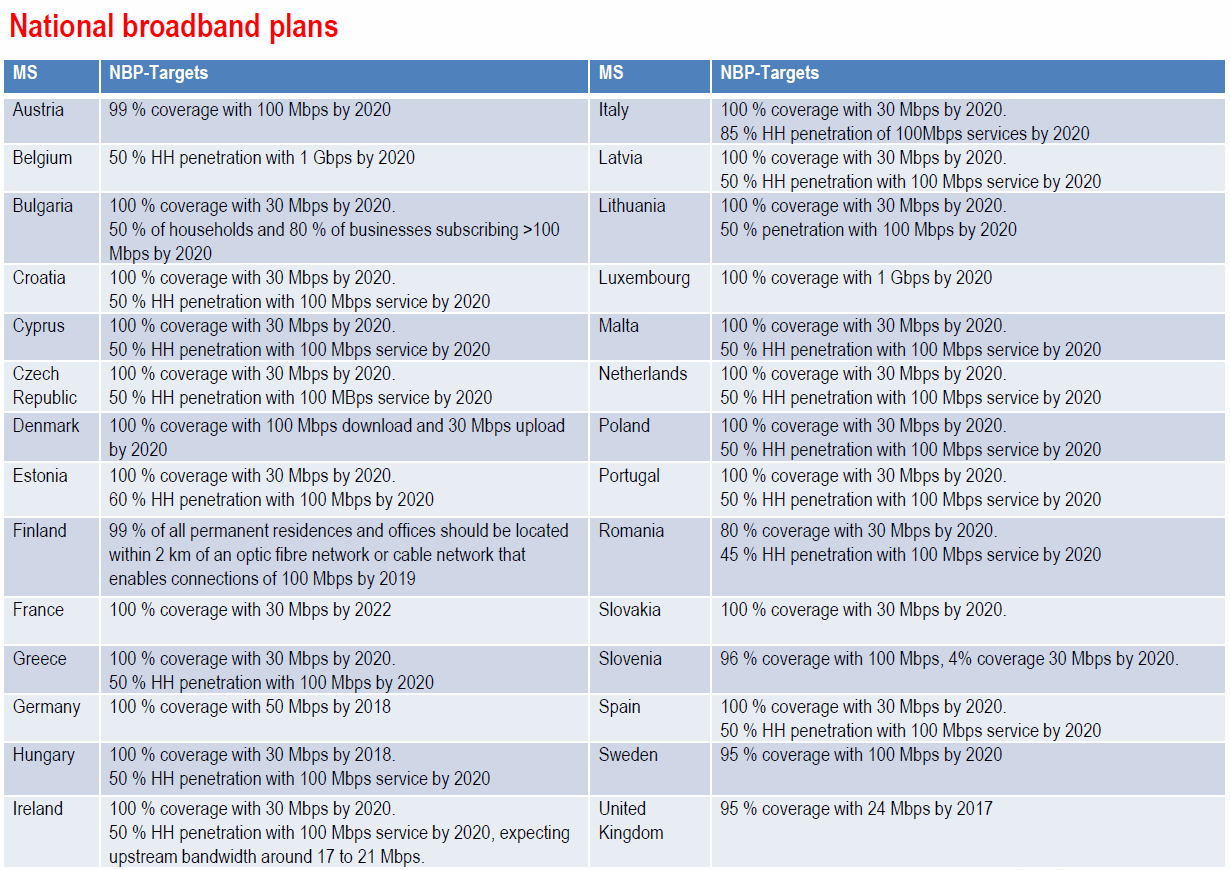
However we should point out that both Wales and Scotland are already talking about delivering universal coverage of superfast broadband (here and here), which makes it somewhat disappointing that both England and Northern Ireland have yet to catch the same bug of aspiration.
Overall the BDUK project has been successful and it’s important to recognise that, despite the absence of a 100% coverage target, the UK’s existing coverage of 30Mbps+ capable broadband is currently still measured to be ahead of most other EU states (here); but how long this lasts is another question entirely.
The original BDUK Phase 1 goal (90%) may have completed a little later than expected but the Phase 2 target (95%) was largely achieved both on time and on budget. Few other Government projects of this scale can claim to have done the same and no doubt BT will take part of the credit for that.
The focus now will be on what comes next and how far can the private sector extend the new generation of ultrafast “full fibre” broadband before we see a much more expensive repeat of the BDUK scheme. In addition, we are still waiting to hear precisely what the approach will be to both funding and delivering the “legally-binding” obligation for a minimum 10Mbps download (1Mbps upload) for all via the new USO (here).
On the other hand if you happen to live within the final 5% or even the final 2% (the latter may only see a 10Mbps USO) then all this talk of progress and of “closing the ‘digital divide’” will no doubt be agonising. After all, you haven’t benefited yet and you’ve already had to wait years and years. Progress has definitely been made but the vocal minority may require something better than a minimum speed of 10Mbps or inferior Satellite.
NOTE: The 95% figure is of course an estimate, although real-world experiences may still be negatively affected by your choice of service (the upgrade isn’t automatic so you need to order it), poor home wiring, slow WiFi networks, network congestion, local street cabinets being full to capacity (i.e. can’t take new orders), faults and various other factors.
UPDATE 11:05am
The CLA (landowners association) has offered up a comment. However, it would also be good if such organisations could do more to pre-actively encourage land owners to allow access for the installation of related cables and equipment, so that rural communities can be better served.
Tim Breitmeyer, CLA President, said:
“Achieving 95% is an important milestone in the delivery of superfast broadband across the whole of the UK but this still leaves significant areas devoid of a fast connection, critical for many rural businesses. Getting connections to rural homes and businesses is complex and expensive but it is essential and a crucial part of establishing fairness and balance in the economy. That is why the universal service obligation of 10Mbps that we fought so hard for, is important not only to rural areas but to the whole country.
It is not just imperative to get rural homes and businesses connected in the first place but also to ensure the service they receive keeps pace with demand and technological change. The universal service obligation must be enacted in law without delay. Once it is in force, we will press for it to be constantly updated to end the digital divide that has held back our economy for too long.”
Mark is a professional technology writer, IT consultant and computer engineer from Dorset (England), he also founded ISPreview in 1999 and enjoys analysing the latest telecoms and broadband developments. Find me on X (Twitter), Mastodon, Facebook, BlueSky, Threads.net and Linkedin.
« JT and Sony Test Low-Power Wide-Area Wireless Network on Jersey UPDATE
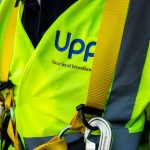


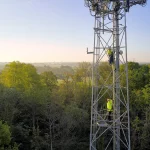


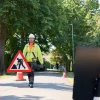

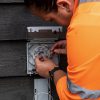








































Comments are closed